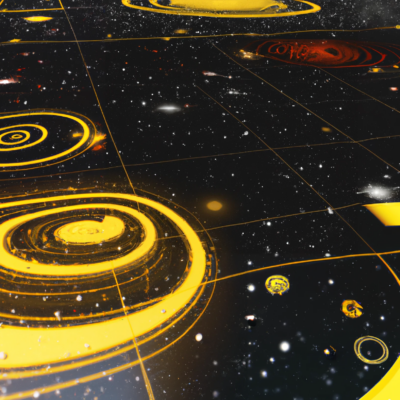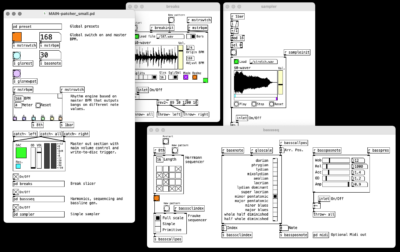Update 13.09.23: In an earlier version of this post, I’ve provided the source code for this in my algomusic GitHub repository. I’ve recently taken down the repo, but you can find all the components discussed on the PD-components repository now.
Building on top of the recently published Algo Jungle quick start template, i’ve written a little pattern and track engine based on the Fibonacci sequence to showcase alternative approaches to track build up and structuring schemes while maintaining a generative angle on the respective elements’ internal pattern logic (e.g. notes, drum patterns). Use case is Jungle/ Drum & Bass. Sound examples are below.
For a quick intro on how the patch is working, there’s a screen recording on my YouTube channel:
The patch
8th note values from a global BPM engine are fed into fibonacciseq subpatch to cycle through values from 1 to 55 (taken here as an end value but can potentially be altered to any value on the sequence of course) and create bangs on every value from the Fibonacci sequence. This basically works as a substitute for a constant meter. The last value on the sequence is sent through a separate outlet to trigger changes after a number of cycle runs.
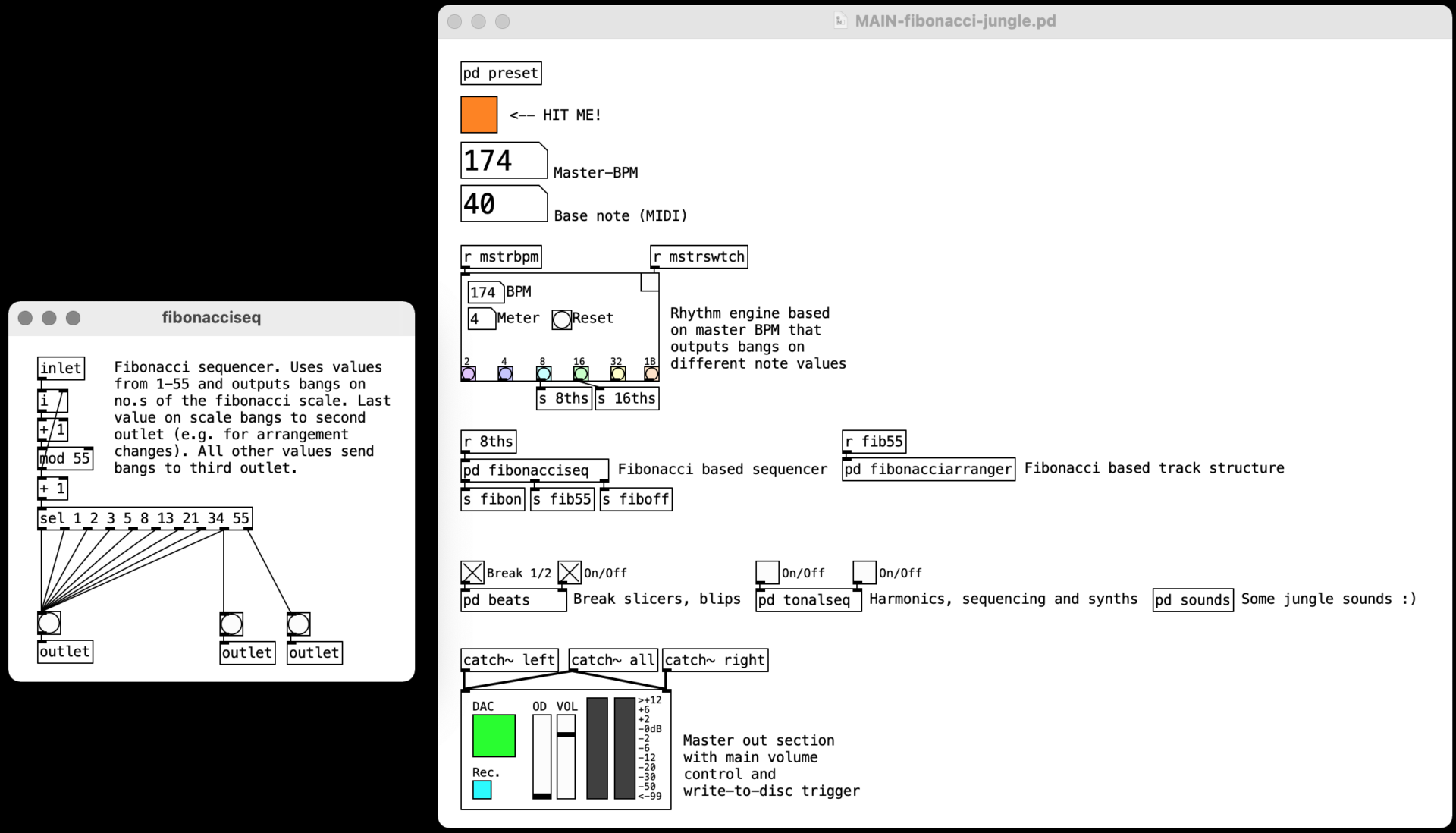
The fibonacciarranger subpatch takes on exactly these cycle run triggers to control a general track arrangement scheme also based on a segment of the Fibonacci sequence.
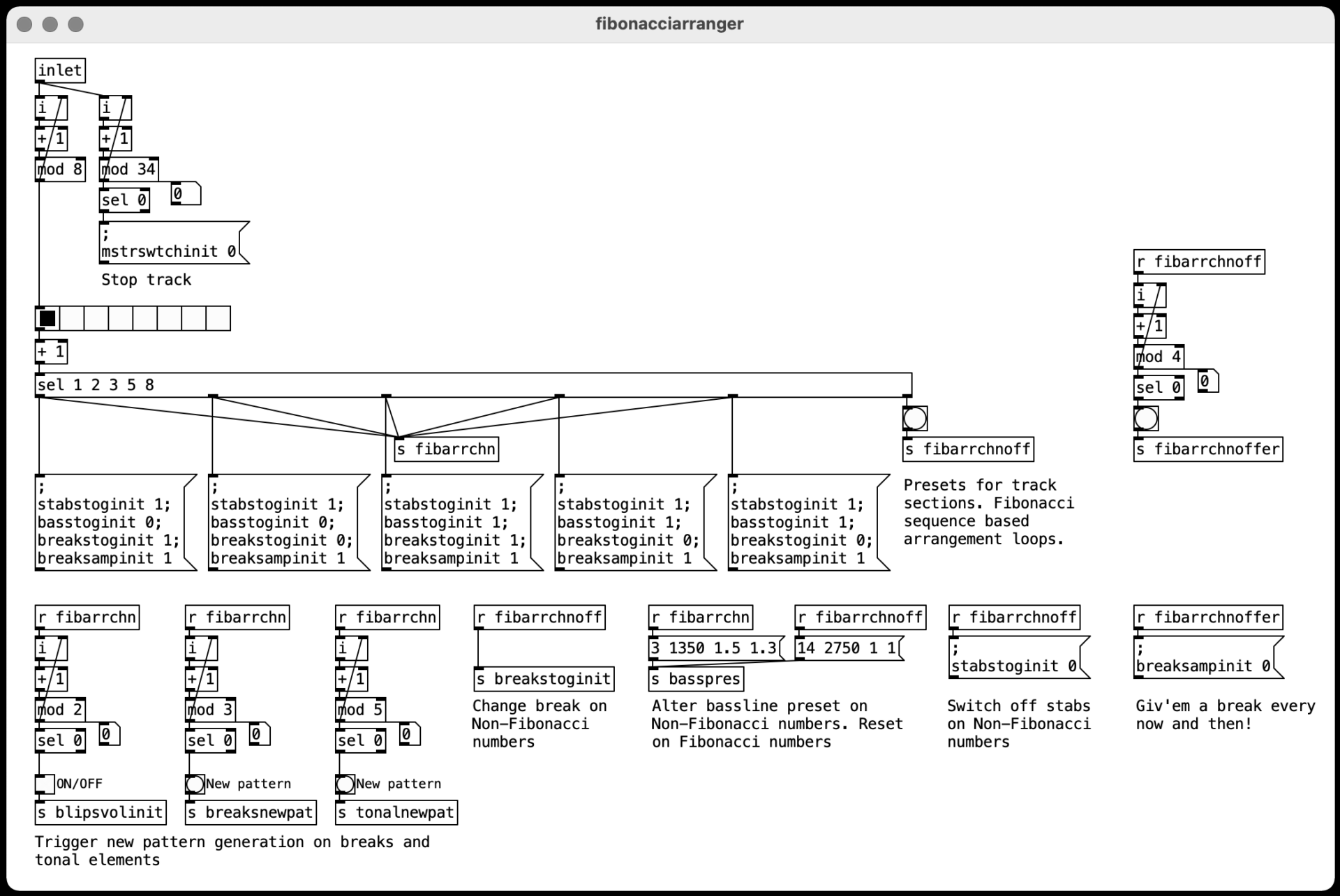
The changes themselves are mainly on/off-switching of elements, new pattern triggers and changes of synth presets.
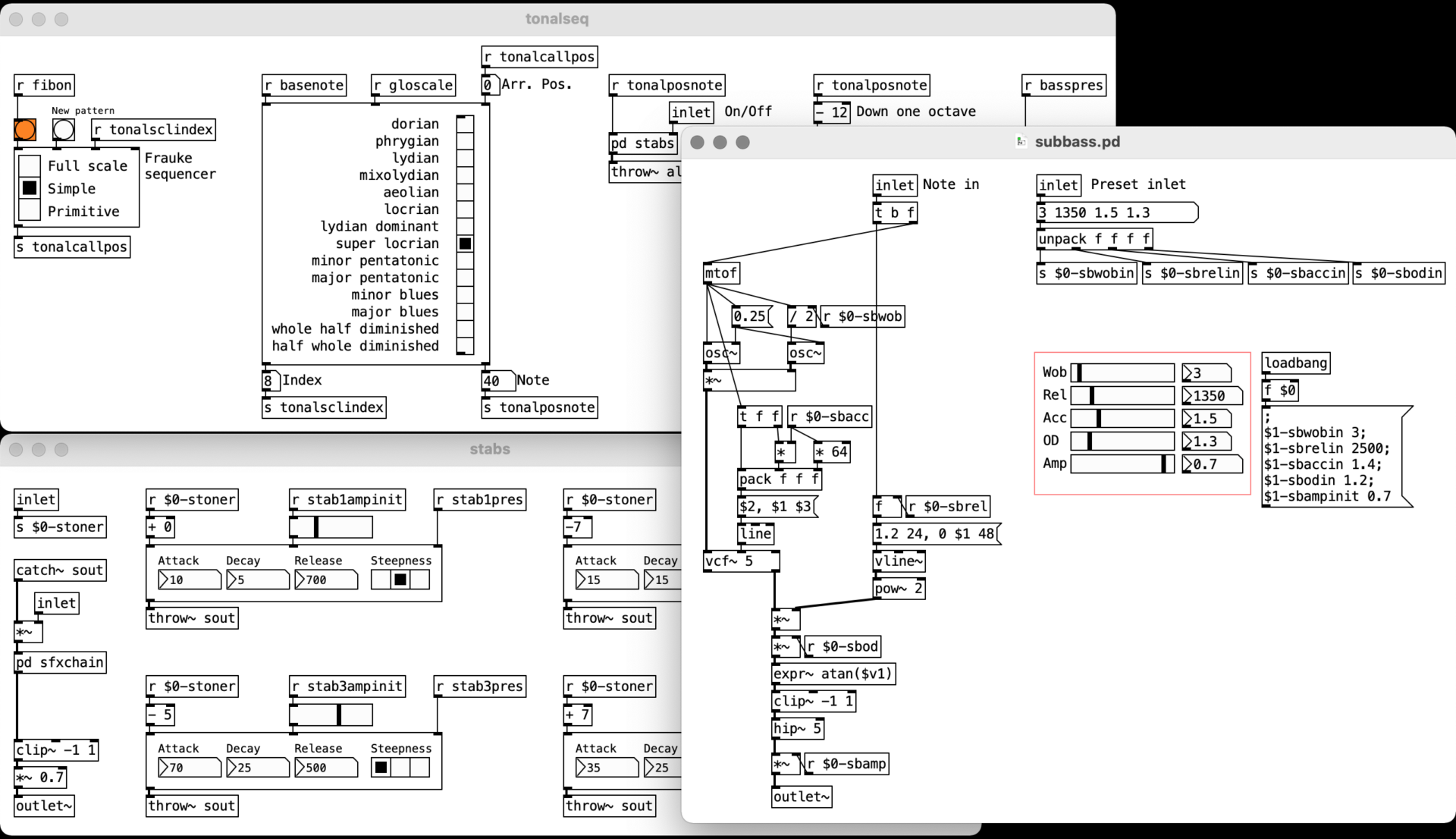
The “Fibonacci Bangs” from fibonacciseq are used to e.g. trigger pattern restart on breaks or effect chain envelopes.
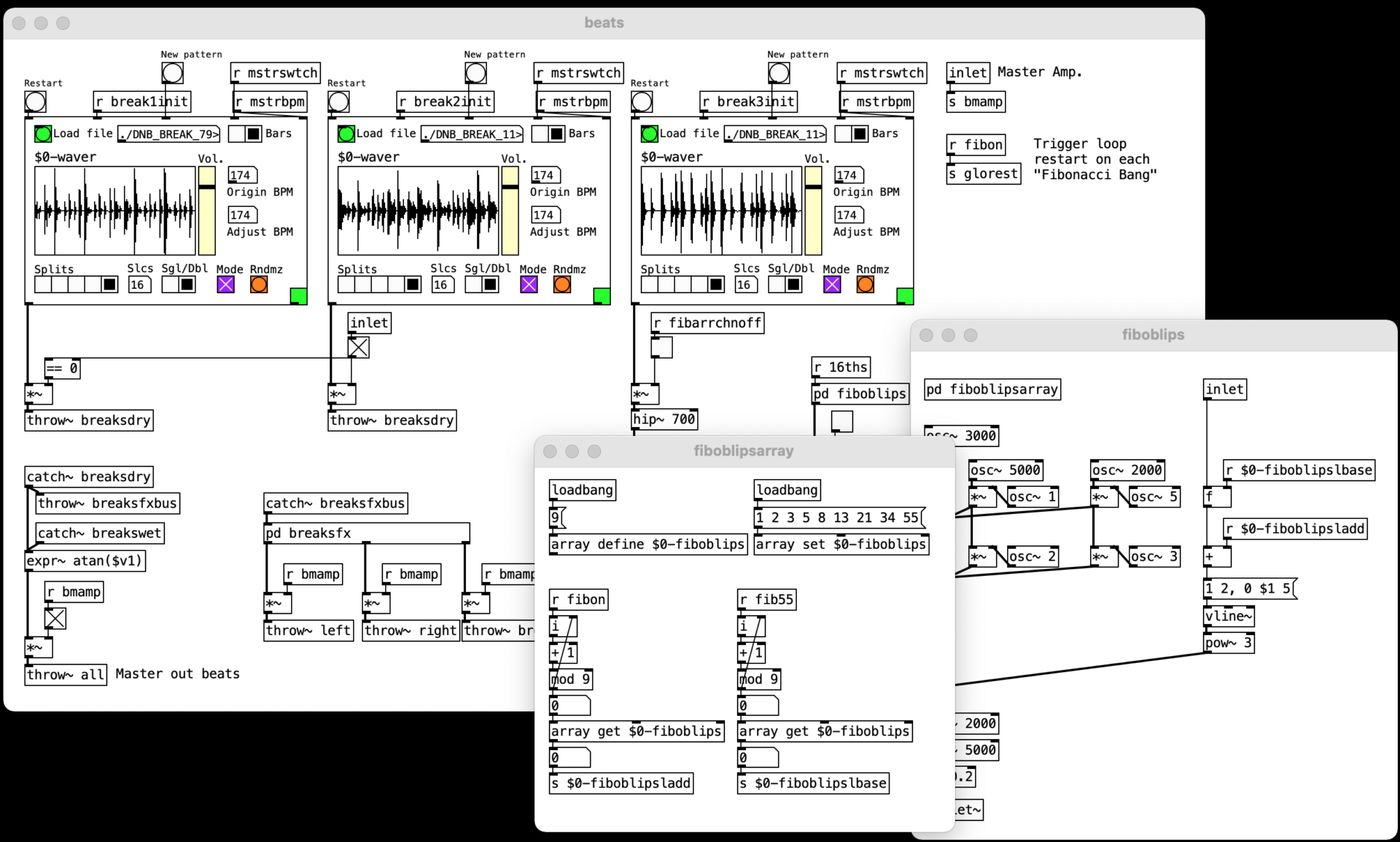
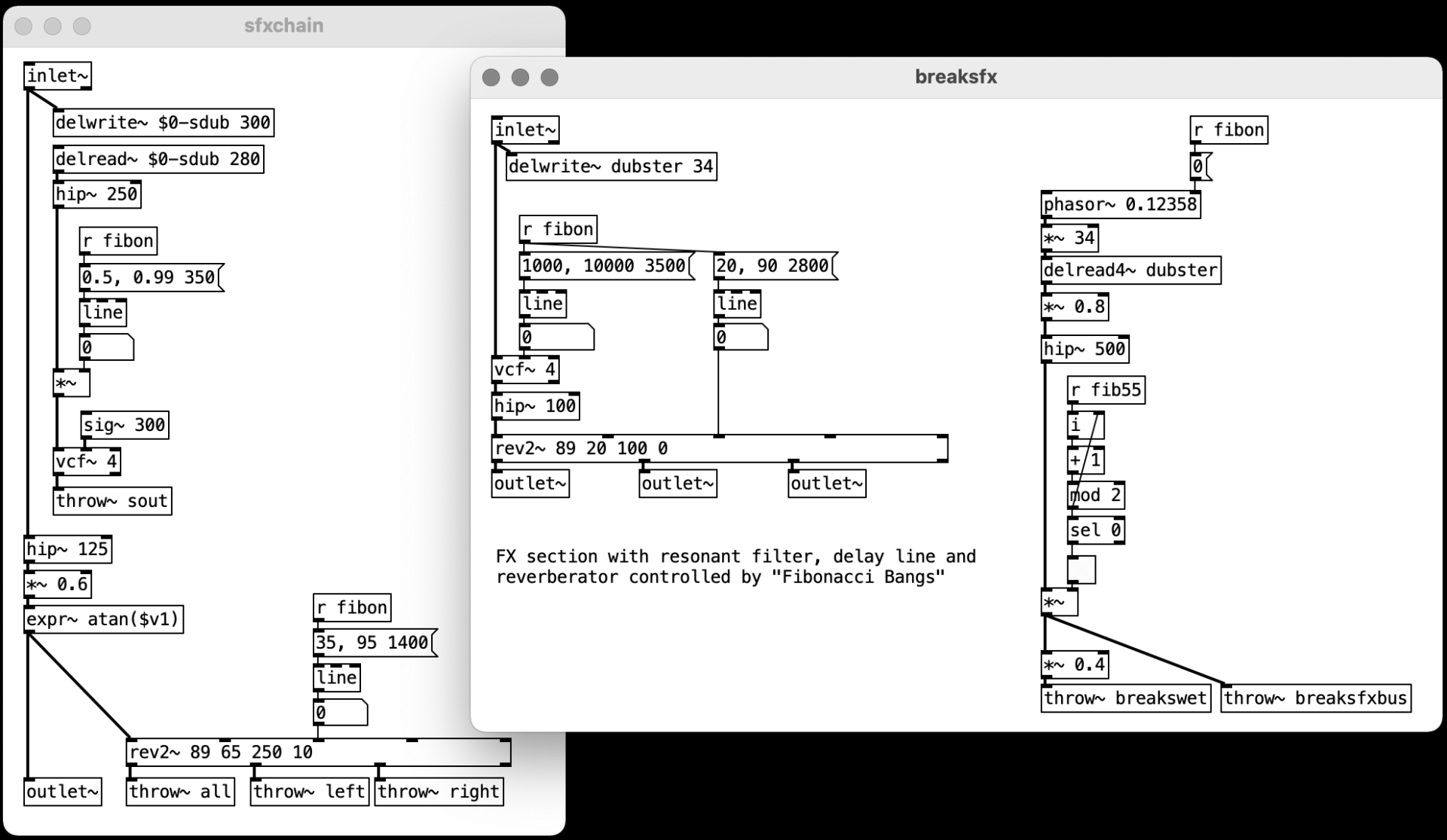
Sound examples
Below are two versions using different parameters, tonal range and sample sets.

